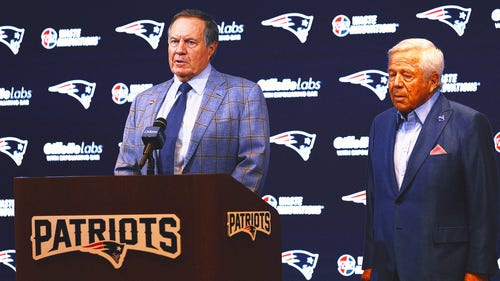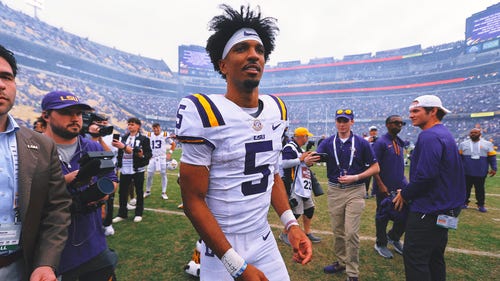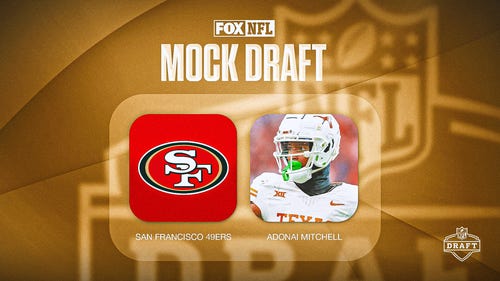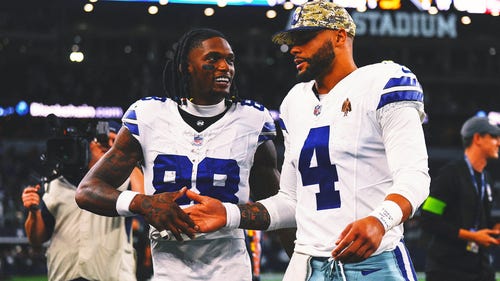
Moore, Wilson more than measurements
It’s easy to see why Boise State’s Kellen Moore and Wisconsin’s Russell Wilson might not make it in the NFL.
They’re short.
Most teams won’t consider drafting or even signing a quarterback under six feet tall. Moore was officially measured at 5-foot-11 3/4 inches earlier this week at the Senior Bowl. Wilson stood 5-foot-10 5/8 inches.
“We walk around a lot together to make it look like football is played at that height,” Moore said with a smile.
Having a good sense of humor about the topic won’t keep some clubs from taking Moore and Wilson off their draft boards. But before leaving Mobile after Saturday’s college all-star game, skeptical scouts and personnel directors should take a long look to the west. They will then remember the most prolific single-season passer in NFL history plays a mere 150 miles away.
A smidgen over 6-feet tall, New Orleans’ Drew Brees is living proof that stature isn’t everything when it comes to having pro success.
“A guy like Drew Brees, it’s easy to fall in love with his play because you understand that he’s very similar as far as the height factor,” Moore said. “He manages the pocket and throws the ball downfield just fine. He’s as good as there are in the league.”
Despite their college success, Moore and Wilson know they aren’t in the same league as Brees when it comes to quarterbacking. Brees, though, faced the same pre-draft scrutiny when coming out of Purdue in 2001.
San Diego head coach Norv Turner was the team’s offensive coordinator when the Chargers selected Brees in the second round. Turner remembers late general manager John Butler asking if he thought Brees was too short.
“I said, ‘John, the guy has probably been that height for the last 10 years of his life,’” Turner recalled before watching Moore and Wilson at Wednesday’s Senior Bowl practice. “He knows how to operate at that height. He’s got great vision. He knows how to move in the pocket. He’s made the adjustment if there is a problem with his vision. He knows how to play.
“I think these two guys [Moore and Wilson] know how to play. If you watch them on tape and the plays they make, they do it differently. But I think there’s a place for both of them.”
Moore and Wilson took their place among college football’s best in 2011. Moore finished his Boise State career as the winningest quarterback (50-3) in NCAA history. Wilson, who transferred from North Carolina State to Wisconsin after a minor-league baseball stint with the Colorado Rockies, guided the Badgers to a Big Ten Championship. Wilson also set five school passing records in his lone Wisconsin season while completing 72.8 percent of his attempts.
Wilson believes his height shouldn’t be “a factor at all” in pre-draft assessments because of what he accomplished with the Badgers.
“I played behind the fourth-biggest [offensive] line in the country,” Wilson said. “Those guys average 6-foot-5 and I was very efficient. I believe I only had three balls knocked down at Wisconsin. That’s important.
“I get back in my drop and play with timing and rhythm. I have a high, quick release. Defensive linemen don’t know when the ball is coming out necessarily. I anticipate routes. I think that’s really something you have to do at the professional level. You have to get rid of the ball on time.”
Wilson also doesn’t buy the adage that taller quarterbacks have the ability to “throw over” their offensive linemen.
“I don’t think anybody really throws over anybody,” he continued. “There’s only a couple of people that can really throw over some people. Most of the time, you throw through lanes. You know the timing and you get outside the pocket when you have to and extend plays. That’s definitely an advantage to my game.”
If he can’t make it solely as a quarterback, Wilson’s athleticism could help him play another position. Antwaan Randle El, a 5-foot-10 college passer at Indiana, enjoyed a nine-year NFL career at wide receiver.
In Moore’s case, he knows its quarterback-or-bust.
“I’m not a tremendous athlete,” Moore admitted. “I’m not the guy who’s gonna run for 20 yards on third-and-10. I’m going to go through some progressions and get the ball to some talented players around me and let them make plays.”
Height isn’t Moore’s only obstacle. He currently weighs 191 pounds — the more muscular Wilson was 203 — and physically looks like more like an equipment manager than quarterback when out of pads. Moore also displayed suspect arm strength during some Senior Bowl practices, especially on sideline routes.
But he was clearly doing something right to rank among the NCAA’s all-time passing leaders in career yardage (14,667), touchdowns (142) and lowest turnover percentage. A mere 1.69 percent of Moore’s 1,658 attempts were intercepted.
“I’ve been very fortunate to play (in college) for four years,” Moore said. “That experience really helps you. You’ve played a lot of schemes and a lot of opponents. You’ve gone through a lot of challenges.
“With that, you learn the emphasis of preparation and how important a week is leading up to a game. When you prepare well, it allows you to play so much faster. With that comes great decisions. You throw an accurate ball and on time.”
Moore and Wilson are working with former NFL quarterbacks Ken O’Brien and Chris Weinke respectively to better their technique. Both also will have the chance to further showcase their wares next month at the NFL Scouting Combine in Indianapolis.
Turner, though, said analyzing game video is the best way to assess both players.
“My biggest thing when I evaluate quarterbacks is how they handle throwing passes in a real compact area,” Turner said. “You don’t have very much room in the pocket. In college, you can see a guy take two hitches and a two-and-a-half yard step to throw a ball 40 yards down the field. That doesn’t happen in our league very often. Usually, you can’t get your hips into it. You’ve got someone backing into your face. You’ve got a tight pocket and you’ve got to operate in a tight area.
“We take the tape and take all the easy plays out. Then we watch how he does against pressure, in a tight pocket or with someone in his face. How’s he going to handle the way the game is played in our league? How does he throw the ball to guys who are tightly covered?”
Moore and Wilson can’t wait to answer those questions in an NFL training camp.
“Some people, they’re going to take (the height issue) seriously,” Moore said. “Maybe it’s a critical thing they can’t overcome from an evaluation standpoint. That’s fine. You don’t need all 32 teams to fall in love with you.
“You need one.”
Kellen Moore, Russell Wilson and Norv Turner were interviewed by Alex Marvez and co-host Jim Miller on SiriusXM NFL Radio.















































































































































